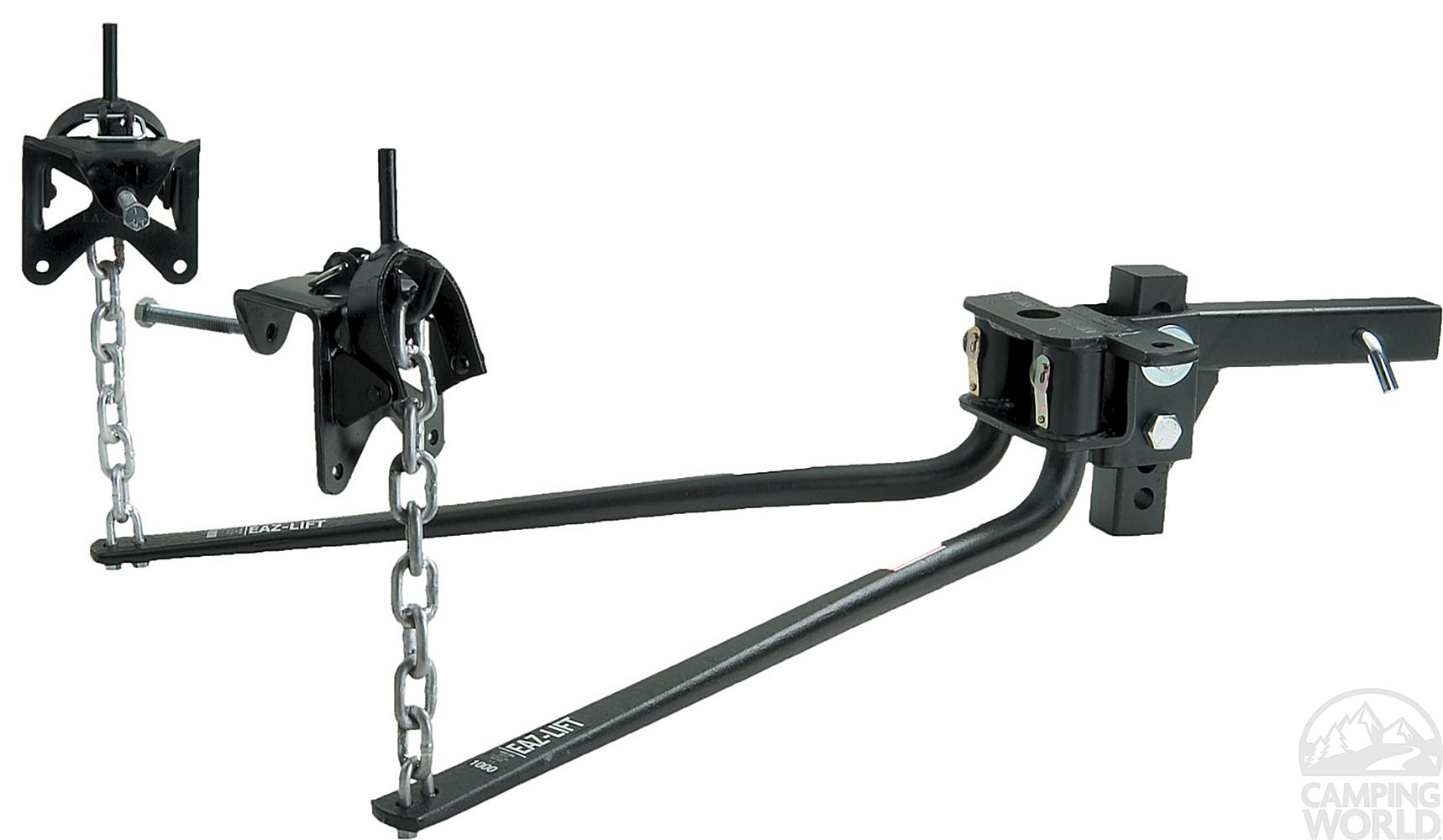Understanding Weight Distributing Hitch Systems
Benjamin | Sep 27, 2012 | Comments 4
Anyone who has ever spent any time towing is familiar with the scary sensation of trailer sway. Trailer sway occurs when the load that you are pulling behind your truck begins to move from side to side of its own accord, eventually creating a pendulum-like effect where the trailer oscillates from one side of the lane to the other. Getting a swaying trailer back under control involves creative steering and braking inputs and nerves of steel, and it’s a situation that most towers strive to avoid at all costs.

Weight distributing hitch system.
One way to help prevent trailer sway is to install a weight distributing hitch. Traditional hitches by design handle as much as 15 percent of your load’s gross trailer weight through the trailer’s tongue, which can become an issue when dealing with heavier loads. If a hitch begins to dive – i.e., sink towards the pavement – then the front wheels of your tow vehicle can loose some of their contact patch with the road, which reduces your ability to steer and brake. In contrast, too little tongue weight can lead to a scenario where trailer sway starts to become an issue.
Opting for a weight distributing hitch system is a good way to strike a balance between too much and too little tongue weight. This type of hitch uses spring bars, either in the trunion style or the round bar style, in order to distribute a trailer’s weight to both the front and the rear axle of the vehicle doing the towing, spreading out the load more evenly. Trunion bars mount though the side of the trailer hitch head assembly, while the round bars mount underneath. Round bars typically provide more clearance, but trunion bars are rated for higher loads – in some cases up to 17,000 lbs.

Weight distributing hitch system installed.
How do the spring bars work? The bars themselves are attached to both the hitch head and the back of the trailer tongue. As the load on the hitch itself increases, the spring bars push back against the load in order to lift it up off of the hitch and spread it out horizontally across both the trailer’s axles and the truck’s axles. With the spring bars bearing part of the tongue load, the hitch itself is no longer stressed to the same degree and the entire trailer is much more stable.
It’s important to remember that a weight distributing hitch won’t magically increase the maximum towing capacity of your vehicle – it will merely make it easier to control loads that come close to your truck’s top end tow rating. Almost any hitch out there can run either a standard or a weight distributing setup, and hitches are marked with two max capacities and max tongue weights (one for each setup). Once again, if the hitch’s max capacity when outfitted with a weight distributing system exceeds that of your vehicle, this does not mean you can tow up to that point. You still need to stay within the limits set by your truck’s manufacturer.
Related Posts:
- Tundra Towing 101
- 2011 Tundra To Adopt New Trailer Towing Standards
- Toyota Tundra Towing Basics – What To Know Before You Tow
Search terms people used to find this page:
- tundraheadquarters
Filed Under: Tundra Towing


The system will MOST definatly help in towing especially with sway on the highway.
As for which one is better I will leave that up to the more knowledgable people here and this can be varied with their need.
If You want to get your vehicle and trailer on a level surface. Unhitch, then get your trailer level. Adjust the hitch on the truck so that it is level to where the tongue hitch is, use a yardstick to measure the distance of your rear wheel well to the ground. Raise the trailer, and couple. Once you have the coupling secured, raise the trailer as much as needed to attach the chains. Once you have the chains on, raise the jack. Measure the wheel well height again – it should be as close as possible as when there was no trailer. If still too low, raise both again and move the chains up another link.
The hitching system will most definatly help in towing especially with sway on the highway.
As for which one is better I will leave that up to the more knowledgable people here and this will be according to your need.
Hey Benjamin, We just wanted to say that we agree 100 percent on your observation about how it feels towing without any sway control installed. Speaking from experience, you really captured how it feels. Also, your emphasis on how important the spring bars are to your Weight Distribution Setup and what they do is some of the best we have seen. We here at HitchAnything have an article that goes in depth on the topics that you brought up, and we thought that you and your readers would enjoy reading it. Thank you for your time and this article.
P.S. We just found this Blog, and this article in particular, so apologies on the late comment